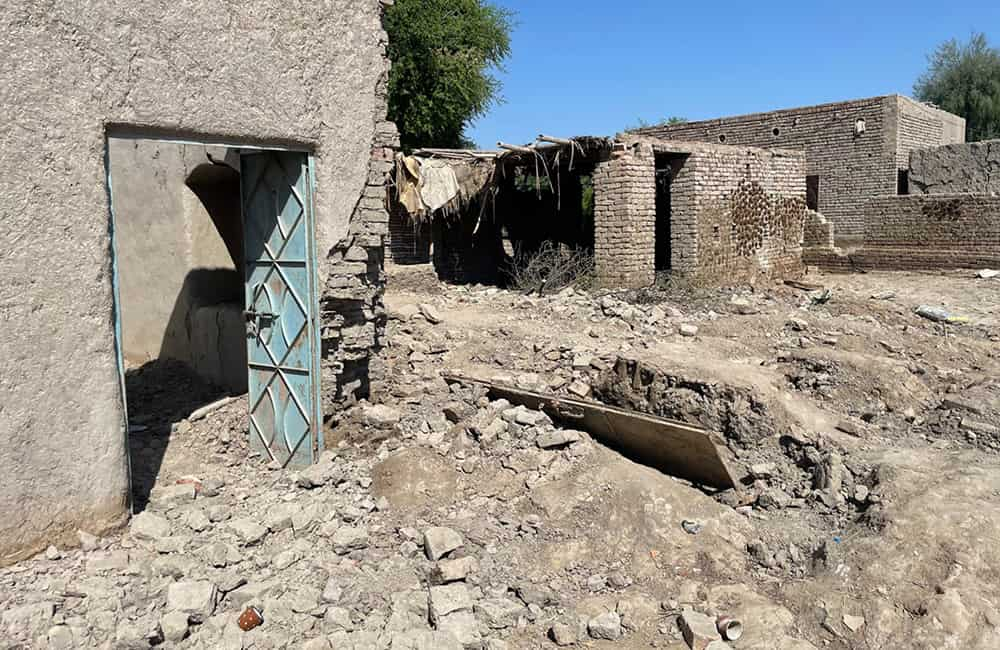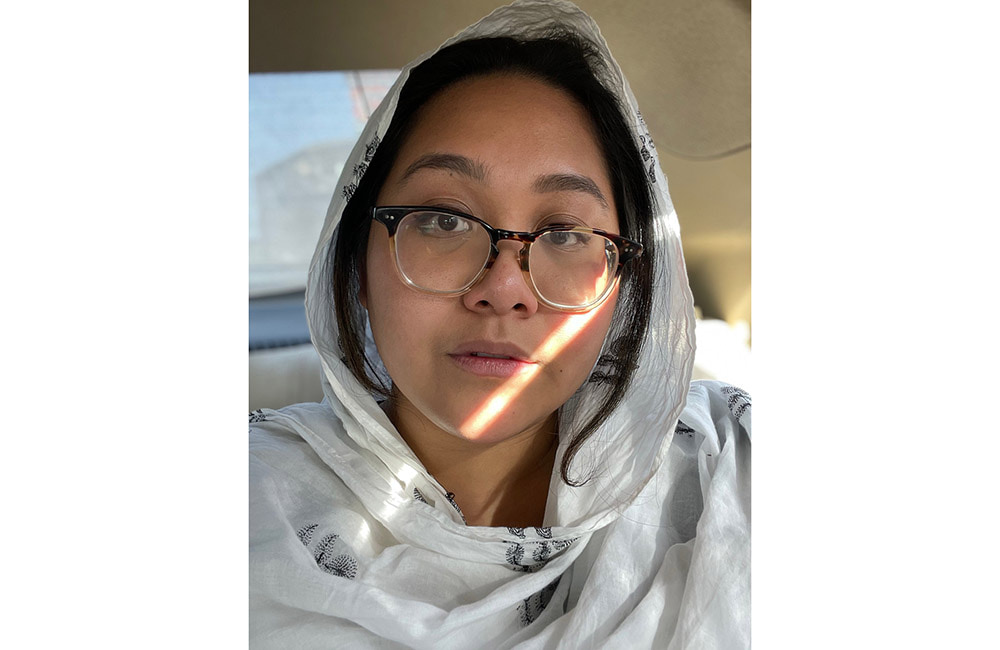We spoke to Zainab for a while, listening to her story. Soon after we were ushered to another area where thanks to our donors, Save the Children along with our partners had organised relief packages for families like Zainab’s.
These relief packages included temporary shelter kits, basic foods like rice and flour, as well as cooking utensils and female hygiene packs.
Crisis of millions
Zainab and her children are among the 32 million people in Pakistan whose lives were devastated by these unprecedented floods, which left 8 million people homeless and were described by UN Secretary-General Antonio Guterres as “climate carnage beyond imagination.”
Even some months on, the UN has described the situation as an ‘ongoing nightmare’ for millions of children- for while the intense heat may have left when I did, what replaced it is a bitter cold winter.
The floods in Pakistan shattered the lives of at least 16 million children, and those who did manage to survive lost so much in the process, housing, shelter, access to clean water and education, including Zainab and her children.

Houses badly damaged by the floods in Sindh Province, Pakistan.
Photo: Mala Damadi/Save the Children.
Pakistan’s government estimates it will need over US$16 billion to build back flood-affected communities in a climate-resilient way, but while there have been some funding commitments, including from Australia, the total so far is not enough.
These funds are vital, not only to help those affected recover now, but also to limit the cost to Pakistan in terms of loss of life, destruction of homes and livelihoods, and damage to the national economy from future disasters and slow onset climate changes.
While it’s been some months since my return from Pakistan, I will never forget the devastation I saw and the resilience and determination of flood affected communities. Witnessing the strength and the work Save the Children along with partners were doing with communities there gave me hope.
Seeing this work first-hand, made me grateful for the generous support of our donors who help make this vital relief work possible. But I also know, that we owe it to the people of Pakistan, we owe it to Zainab and her children to continue to advocate for climate justice.

Mala Darmadi of Save the Children Australia Media Team on location in Pakistan.
Photo: Save the Children.